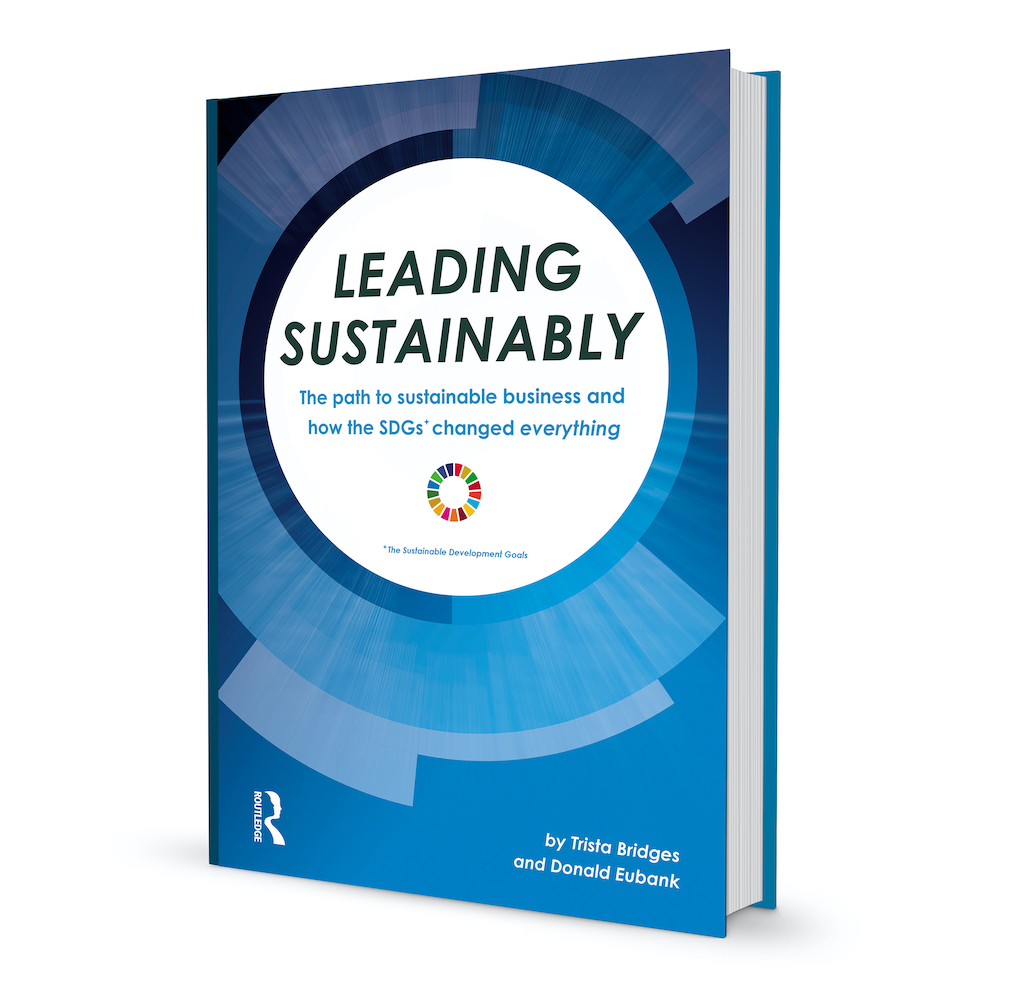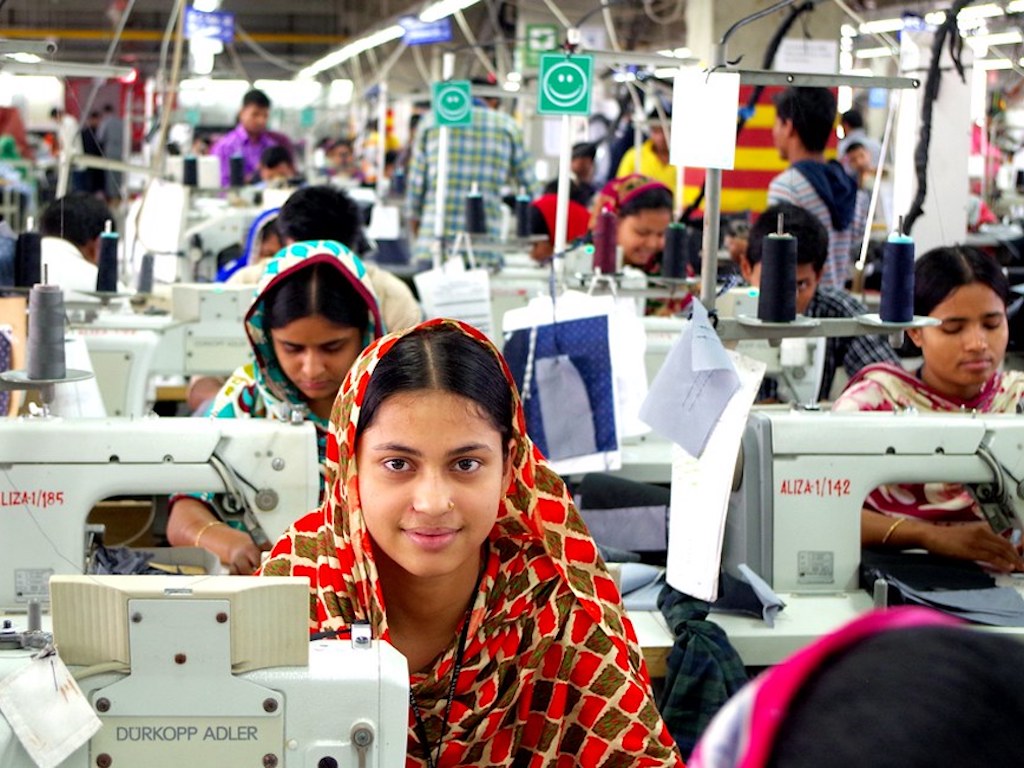‘The Fashion Industry Is Entering A Period of Reflection And Reinvention’ – Exclusive Extract From New SDG Book
7 Mins Read
In an excerpt from their new book “Leading Sustainably: The Path to Sustainable Business and How the SDGs Changed Everything,” Trista Bridges and Donald Eubank illustrate how the rise of ‘Consumer Culture’ pushed the fashion industry to embrace sustainability.
There are few sectors that have been under as much scrutiny when it comes to sustainable business models as fashion and apparel industry. The rise of “Consumer Culture” in the latter half of the 20th century was both a boon for the sector and a curse. The rise of celebrated brands, the birth of high streets and shopping malls, and the emergence of the middle class around the world all converged to create an ideal market environment for retailers and the global fashion and apparel groups that were becoming increasingly consolidated.
The quick runway to retail and fast fashion models, pioneered by the likes of Top Shop and Zara, further fueled consumers’ desire for the latest and greatest fashion, ramping up the volume of apparel produced and shipped around the world. Success in the sector became predicated on who could build the most efficient and cost-effective supply chains, accelerating the move to rapid prototyping, quick materials sourcing, fast production, and seamless and swift distribution through retail outlets to consumers.
The downside has been an increasing burden on the environment, society and communities in emerging markets. As globalization took hold and demand has ticked up, production moved eastward toward Japan and Taiwan first, next China, and then Bangladesh, Vietnam, and Indonesia. Contract manufacturing became the norm across the sector.
This shift was hastened by a WTO policy that had unintended consequences. In 1973, the US and several other countries signed up to a WTO quota system that limited the textile and apparel imports from certain emerging markets. Although the aim of the policy was to protect domestic production and employment in the sector in the US and other developed markets, it ended up driving up wages, becoming an impetus for businesses to move production to contract manufacturers in lower wage markets.

When the quota system was rolled back in 2005, the trend accelerated, establishing contract manufacturing as the operational norm. Predictably this supply chain transformation has resulted in many challenges for the sector.
The most famous scandal, perhaps, was the one at Nike, which injected the word “sweatshop” into the public consciousness. The 1990s became Nike’s “decade horribilis,” with an onslaught of labor and environmental scandals at their Asia-based contract manufacturers. One Ernst and Young study found that a whopping 77 percent of workers at one supplier factory had respiratory problems and were exposed to dangerous carcinogens, 177 times above the legal level.
Nike has made a dramatic turnaround from those days and is now seen as an industry model for how to embrace sustainability, but it took years to undo the damage, and for the industry as a whole to follow their lead and right the ship.
Spurred by bold sustainable fashion innovators and an evolving consumer mindset about sustainability issues in fashion and apparel, the industry is entering a period of reflection and reinvention. As we’ve seen in the information technology sector, innovation rarely emerges from incumbents. Instead, it comes from small and disruptive innovators who see the problems the sector faces as opportunities to drive innovation and reimagine how the system works.
Innovation in fashion and apparel looks to be following a similar trajectory. At every stage of the value chain, innovation has taken hold. Seeing opportunities in innovations enabling sustainability, global fashion and apparel groups are embracing and beginning to invest in fashion tech startups and innovations.
One company that has a leg up on its peers is H&M Group. Since early this decade, H&M Group has been rolling out various initiatives to orient every step of their value chain toward sustainability. As the first retailer to make its supplier list public, they embraced transparency as their journey.
Their next big push was tackling fair wages through their effort to encourage their manufacturing partners in emerging markets to implement wage management systems. They’ve found that these systems are an important first step in enabling better wages and empowering workers to engage in collective bargaining and wage negotiations.
H&M Group haven’t yet made a “living wage” as the operational standard for doing business with suppliers, but they have developed systems to isolate and remove wage costs from any price negotiations, so that costs for paying the applicable wage level would be guaranteed to be covered with any order made. It is encouraging to see that as a result 67 percent of H&M Group’s product volume is now produced in factories that are implementing improved wage management systems, well exceeding their initial 50 percent target. This translates to 500 factories and 635,000 workers, a significant step forward in just five years’ time.

These are just the first steps that H&M Group is taking in this important area. Their larger goal is to change wage setting systems for the whole industry and, ultimately, entire countries. “Together with about 20 other brands and the Global Union Federation IndustriALL, we’ve joined the industry initiative ACT (action, collaboration, transformation)” Hendrik Alpen, Sustainability Engagement Manager and Team Lead at H & M Group, tells us. “This initiative aims to establish collective bargaining systems in which suppliers and local trade unions can negotiate wages and working conditions fairly. This includes, for example, commitments to financial support and to stay with suppliers in these markets even when wages increase [our emphasis]. Importantly, this initiative is also supported by a unique commitment from brands to “responsible purchasing practices”.
The next big push for H&M Group is to move to full Circularity in their production and operations, certainly a difficult task for a fast fashion business. Intuitively, fast fashion and Circularity are two concepts that are difficult to reconcile. Yet H&M Group is committed to find a responsible way to do so. Really they have to–in addition to the negative impact of a non-circular model on the environment, Alpen says that they also understand that the extensive supply disruptions that would arise in a world upended by the effects of climate change could, effectively, put them out of business.
So how do they plan to get there? One important enabler will be technology. Nowhere is technology’s central role more apparent than in its global Garment Collection Program, an industry first that has been running for more than five years. There has been growing criticism around the true Circularity of collection programs as a result of the vast amounts of collected apparel that still ends up in landfills or incinerators, but H&M Group has largely been bucking this trend.
They’ve achieved this via their “recycle-reuse-rewear” approach, which includes a “0 percent” landfill commitment. Somewhere between 40 to 60 percent of reclaimed materials are reused or reworn or “upcycled”, and the remainder is “downcycled”, that is, used in other applications such as making housing and car insulation, with a very small percentage going to incineration. Downcycle applications are, of course, better than landfilling or incineration.
The Holy Grail of fashion is reusing textiles to make new garments. The technology on this is nascent, but there are strong signs of positive progress. H&M Group is particularly excited about new, emerging innovations in the space, and are actively investing in or collaborating with companies and other stakeholders to support their development. Two such companies are Worn Again Technologies, a polymer recycling startup, and HKRITA (the Hong Kong Research Institute of Textiles and Apparel), whose full-loop hydrothermal method for recycling cotton and polyester blends is able to maintain the structural quality of the materials, a difficult feat to achieve.
While it’s critical that “Big Fashion” takes a leadership role in reconsidering and evolving their business models toward ones that put sustainability at the core of their strategy—as we saw with the rise of digital technology—the heart and soul of the sustainable fashion movement are the many small innovators and like-minded investors.

The above extract is published in ‘Chapter 6: What’s Next—industries as hotbeds of sustainable innovation’ from the new book Leading Sustainably: The Path to Sustainable Business and How the SDGs Changed Everything” by Trista Bridges and Donald Eubank, out today (GBP 23.99, Routledge 2020). You can purchase “Leading Sustainably” here.
Lead image courtesy of Leading Sustainably.




